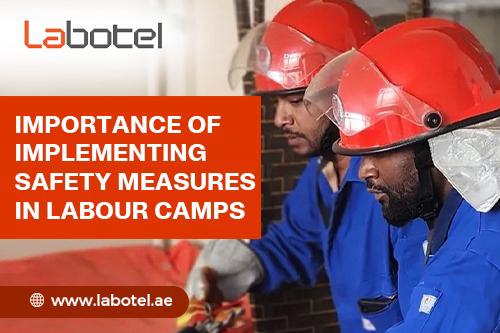Importance of Implementing Safety Measures in Labour Camps

Labour camps typically house large numbers of workers in shared spaces. In such close living quarters, a minor issue, like a blocked fire exit or a faulty electric socket, can quickly turn into a major hazard. Safety measures are designed to prevent accidents, manage risks, and ensure that workers are not just physically secure but also emotionally supported.
Neglecting safety can result in workplace injuries, fire outbreaks, poor sanitation, and even long-term health complications. But beyond the practical risks, poor safety can also erode morale, create distrust, and damage the employer’s reputation.
Key Safety Measures Every Labour Camp Must Implement
Here are some of the most important safety protocols and practices that should be in place in every labour accommodation facility:
1. Fire Safety
- Install smoke detectors and fire alarms in all living quarters.
- Provide fire extinguishers on every floor and in common areas.
- Conduct regular fire drills and educate workers on emergency evacuation procedures.
- Ensure clear, accessible fire exits.
2. Electrical Safety
- Use certified electrical equipment and avoid overloading sockets.
- Conduct periodic inspections to check for faulty wiring.
- Provide proper lighting in all common areas, stairways, and bathrooms.
3. Health and Sanitation
- Maintain clean and functional toilets and bathrooms.
- Ensure safe drinking water is available at all times.
- Conduct pest control at regular intervals.
- Provide hand-washing stations with soap in key areas.
- Manage waste disposal with sealed bins and daily clearance.
4. Ventilation and Air Quality
- Equip rooms with proper ventilation systems or exhaust fans.
- Regularly clean air-conditioning units to avoid respiratory issues.
- Prevent mold and dampness by monitoring humidity levels.
5. Safe Cooking and Dining Areas
- Ensure kitchen equipment is properly maintained and gas lines are inspected frequently.
- Separate raw and cooked food storage to avoid contamination.
- Provide hygienic dining spaces with adequate seating and ventilation.
6. Emergency Preparedness
- Maintain a stocked first-aid kit in easily accessible areas.
- Train a few workers in basic first aid and CPR.
- Display emergency contact numbers and routes clearly in every building.
7. Structural Safety
- Conduct regular inspections of buildings to check for cracks, leaks, or any deterioration.
- Ensure stairways have secure railings and anti-slip treads.
- Provide adequate lighting and signage across the facility.
8. Mental Health and Well-being
- Create relaxation or leisure zones where workers can unwind.
- Offer recreational activities to relieve stress and boost morale.
- Set up channels for workers to report grievances or safety concerns confidentially.
9. Personal Safety
- Ensure secure locks and privacy for personal belongings.
- Appoint trained security personnel for round-the-clock safety.
- Provide identification cards and maintain a visitor log to control access.
Creating a Culture of Safety
Safety isn’t just about ticking boxes—it’s about creating a culture. When workers feel safe, they are more focused, confident, and productive. Employers, camp managers, and facility operators must regularly engage with workers, seek feedback, and review policies to improve safety outcomes.
Simple steps like encouraging open communication, conducting monthly safety audits, and recognising staff who maintain high safety standards can go a long way.
Labotel’s Take on Implementing Safety Measures
At Labotel, safety is a daily practice. The camp follows strict safety protocols, from regular fire drills and electrical inspections to routine health and sanitation checks. Every measure is thoughtfully implemented to protect residents and create a secure, worry-free living environment. By maintaining high safety standards and proactive risk management, Labotel ensures that every worker feels safe and truly is safe, day in and day out.
